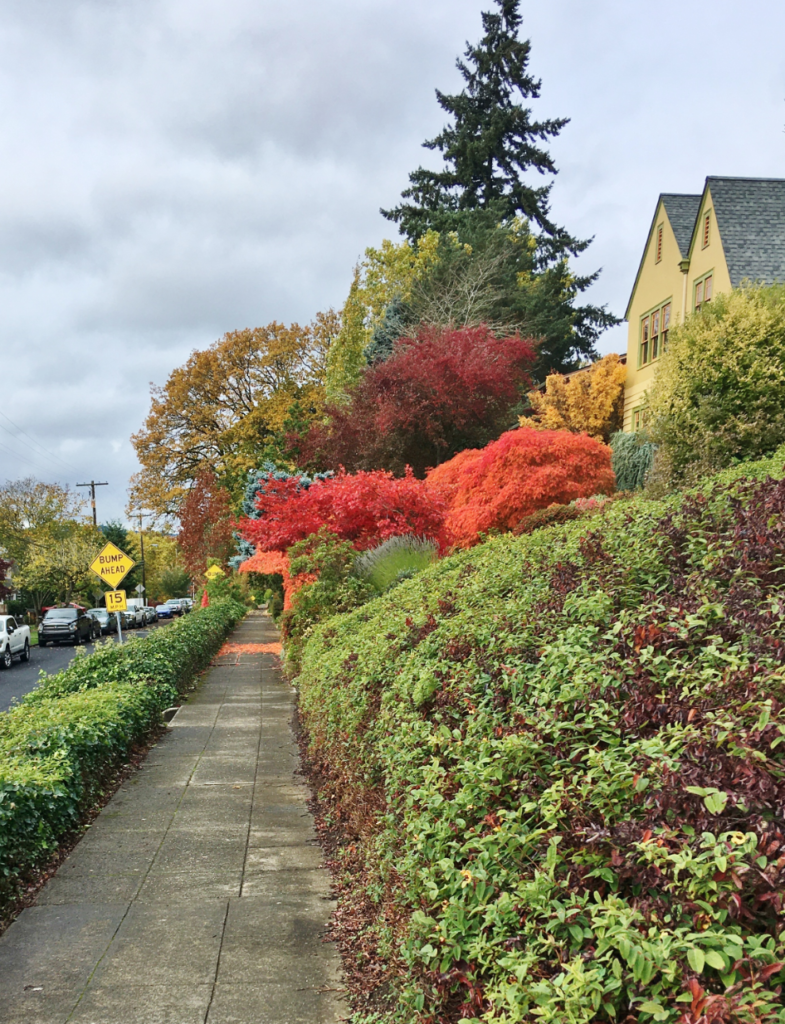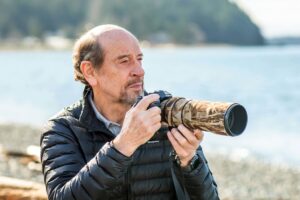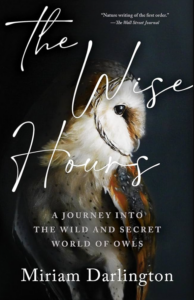Urban Trees in Western Washington – A Wildfire Risk?
By Charlotte Persons
This summer, Tumwater and Thurston County both passed new tree codes that are more protective of trees. For example, the codes require planting more trees to replace those destroyed during the building of new residences, and they also protect mature trees and groves of trees. But climate activists’ joy was short-lived. The Washington State Building Code Council (SBCC) recently passed a code that will result in the destruction of trees around homes throughout the state. Fortunately, the SBCC just last week extended that code’s effective date until March 15, 2024. This allows time to work toward changes.
The purpose of the Washington Wildland Urban Interface Code (WWUIC) is to reduce the risk of wildfires’ destruction of both residences and human lives. The code applies to new residences–and to additions and major repairs (such as a new roof) to existing residences–within wildland urban interface/intermix areas and wildland areas. The interface/intermix and wildland areas are defined in the story map and displayed on the WA DNR map at https://data-wadnr.opendata.arcgis.com/apps/wildland-urban-interface-viewing-app/explore
The interface and intermix areas shown on the WA DNR map cover more than half of western Washington when preserves, state forests, and military bases are excluded. They do not include urban cores, but they do include many other urban areas and urban growth areas. For example, the interface/intermix areas include two-thirds of Tumwater, half of Lacey, part of Olympia, and all of Tenino. Wildlands are defined as areas of dense vegetation and no human inhabitants, but areas zoned for agriculture are also designated as wildlands.
In Thurston County, for example, the bottom line is that the WWUIC applies to all areas where people can live except the urban cores of Tumwater, Lacey, and Olympia.
Property owners and builders have two choices if the property is within the interface/intermix areas or wildlands. One option is to use expensive fire-resistant building materials and methods. The other option is to present a vegetation management plan to the local city or county that is issuing the building permit. That plan creates a defensible space of 30, 50 or 100 feet around residential buildings. The extent of the defensible space is calculated with a worksheet but depends mostly on the slope of the land. The defensible space can have succulents but not grasses. The WWUIC says nothing about shrubs.
Trees are allowed in defensible spaces, but the branch tips of a tree canopy must be 10 feet from any residential building, other tree canopy or overhead electrical wires. Trees must be trimmed or removed to obtain and maintain code compliance. State codes take precedence over the codes of local jurisdictions, so it will be difficult to create a vegetation plan that will protect groves of trees or mature trees.
Since a vegetation plan will be so much cheaper than using fire-resistant materials and building methods, over time the net result will be the removal of many, many trees. Some small urban lots will be completely denuded.
However, it is debatable how much the WWUIC will protect homes. Recent studies of wildfire behavior conclude that defensible space with little or no vegetation does not prevent homes from being destroyed. Embers and firebrands blow thousands of feet from wildfires and ignite homes regardless of the amount of vegetation, even trees, around them. “Hardening” homes with fire-resistant materials and methods offers much better protection.
The WWUIC also appears to conflict with Washington laws that promote tree-planting within cities to reduce urban heating and with laws that protect trees important for stormwater retention and slope stabilization. BHAS has retained an environmental lawyer to explore those conflicts. The Conservation Committee will work with other organizations and Audubon chapters to amend the WWUIC. We believe it is possible to create a code that will protect homes from wildfire and at the same time will allow local jurisdictions to protect trees around those homes.
Photo credit: Lush trees surrounding homes in a neighborhood, by Rachel Hudson.








